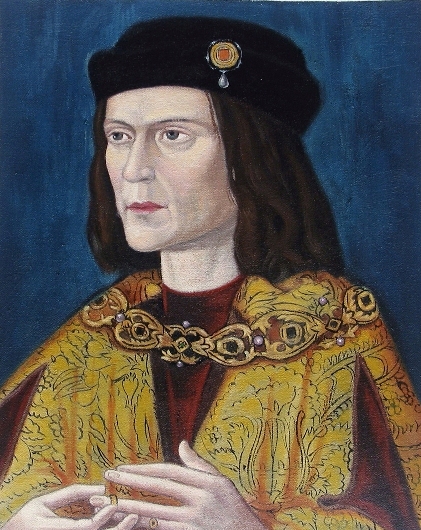Richard III Gravesite May Turn Up Medieval Knight

The lost English church where the body of King Richard III was discovered may still yield more treasures, researchers say. Archaeologists at the site in Leicester are preparing to expand their dig in the hopes of opening the grave of a possible medieval knight.
Richard III's battle-scarred bones were exhumed last year from underneath a parking lot that had been covering the ruins of the medieval Grey Friars Church. Researchers found three other tombs during their search for the king, including a 600-year-old lead-lined stone coffin that may contain the body of Sir William Moton, a knight thought to have been buried at Grey Friars in 1362, more than 100 years earlier than Richard III's death in 1485.
Archaeologists hope to excavate the possible grave of Moton in July during a proposed expansion of their dig at the former Alderman Newton Grammar School, which is set to be converted into a Richard III heritage center. The researchers say the tomb will be incorporated into a visitors' center. [Image Gallery: The Search for Richard III]
"This will be a great opportunity to confirm the plan of the east end of the Grey Friars church to learn more about its dating and architecture, and will give us the chance to investigate other burials known to be inside the building," archaeologist Richard Buckley, of the University of Leicester, said in a statement.
Relying on historical records, Buckley and his team started digging beneath the Leicester City Council parking lot on Aug. 25, 2012, looking for the final resting place of Richard III. They soon found the church, a 17th-century garden marked by paving stones, and then a male skeleton with a spine curved by scoliosis, a skull cleaved with a blade, and a barbed metal arrowhead lodged among the vertebrae of the upper back.
These clues led researchers to believe they had finally uncovered the body of Richard III, who ruled England from 1483 until his death in 1485 in battle during the War of the Roses. In February, researchers announced that DNA from the teeth and a bone matched with a modern descendant of the king. The body eventually will be reinterred in the Leicester Cathedral.
The archaeologists have applied to the Ministry of Justice for an exhumation license and to Leicester City Council to extend their dig at the site.
Sign up for the Live Science daily newsletter now
Get the world’s most fascinating discoveries delivered straight to your inbox.
"It's important that the University is given the chance to continue its excavation of the site, as it's quite possible there are more interesting discoveries to be made within the old Grey Friars church," said Leicester's mayor, Peter Soulsby, in a statement.
Follow Megan Gannon on Twitter and Google+. Follow us @livescience, Facebook & Google+. Original article on LiveScience.com.











